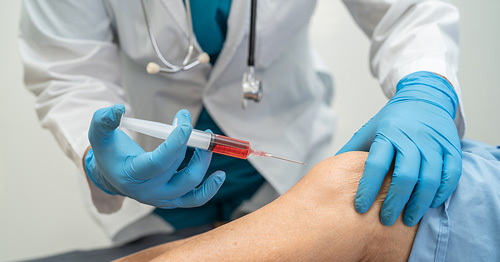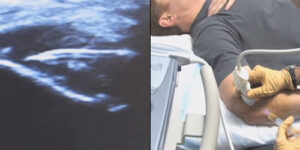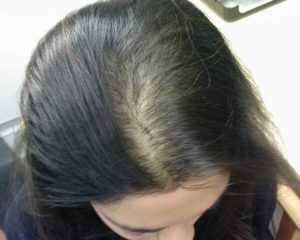PRP
- Home
- PRP
- 25 mei, 2023
- mscstem
- comments off
PRP
Platelet-Rich Plasma (PRP) Injections

In recent years, doctors have learned that the body has the ability to heal itself. Platelet-rich plasma therapy is a form of regenerative medicine that can harness those abilities and amplify the natural growth factors, exosomes and nutritions your body uses to heal tissue.
What is plasma and what are platelets?
Plasma is the liquid portion of whole blood. It is composed largely of water and proteins, and it provides a medium for red blood cells, white blood cells and platelets, exosomes and Nutritions to circulate through the body. Platelets, also called thrombocytes, are blood cells that cause blood clots and other necessary growth healing functions.
Platelet activation plays a key role in the body’s natural healing process.
What is platelet-rich plasma (PRP) and what are PRP injections?
Platelet-rich plasma (PRP) therapy uses injections of a concentration of a patient’s own platelets to accelerate the healing of injured tendons, ligaments, muscles and joints. In this way, PRP injections use each individual patient’s own healing system to improve musculoskeletal problems.
PRP injections are prepared by taking anywhere from one to a few tubes of your own blood and running it through a centrifuge to concentrate the platelets. These activated platelets are then injected directly into your injured or diseased body tissue. This releases growth factors that stimulate and increase the number of reparative cells your body produces.
Ultrasound imaging is sometimes used to guide the injection. The photographs below illustrate a PRP injection into a patient’s torn tendon. The ultrasound guidance is shown at left and the injection is shown at right.

Platelet-rich plasma has been found to significantly enhance the healing process, and using a PRP injection for shoulder pain caused by rotator cuff tears, for Achilles tendon ruptures and for other soft-tissue injuries is becoming more common.
PRP has also been demonstrated to improve function and reduce pain in people who have tendonitis or chronic tendinosis conditions such as tennis elbow or golfer’s elbow.
Some of the key advantages of PRP injections are that they can reduce the need for anti-inflammatories or stronger medications like opioids. In addition, the side effects of PRP injections are very limited because, since the injections are created from your own blood, your body will not reject or react negatively to them. Learn more about PRP injections from the articles and other content below.
Platelet-Rich Plasma (PRP) Treatment: An Overview
Bone and soft tissue injuries heal in many stages. One of the most exciting areas of research in orthopedic surgery and sports medicine involves making the most of the initial healing stages: inflammation and an increase in cells, or cell proliferation.
Platelet-rich plasma (PRP) treatment, a form of regenerative medicine, is becoming a more popular option for giving a biological boost to the healing process. PRP treatment has received significant attention from the media and has been used by numerous professional athletes.
What is PRP?
PRP is produced from a person’s own blood. It is a concentration of one type of cell, known as platelets, which circulate through the blood and are critical for blood clotting. Platelets and the liquid plasma portion of the blood contain many Groth factors, exosomes and small amount of stem cells that are essential for the cell recruitment, multiplication and specialization that are required for healing.
After a blood sample is obtained from a patient, the blood is put into a centrifuge, which is a tool that separates the blood into its many components. Platelet-rich plasma can then be collected and treated before it is delivered to an injured area of bone or soft tissue, such as a tendon or ligament.
PRP is given to patients through an injection, and sometimes ultrasound guidance can assist in the precise placement of PRP. After the injection, a patient must avoid exercise for a short period of time before beginning a rehabilitation exercise program.
Is PRP treatment effective?
Several basic science studies in animal models suggest that PRP treatment can improve healing in soft tissue and bone. For example, increased numbers of cells and improved tendon strength have been noted in Achilles tendon injuries, and improved muscle regeneration has been shown in gastrocnemius (calf) muscle injuries.
These favorable findings in animal models have led to the widespread use of PRP treatment for a variety of conditions, including acute and chronic tendon problems, as well as injuries to ligaments and muscles. Some early-stage clinical studies in humans have been promising, but are limited by their study design and few patients.
The most promising early results have been seen when PRP treatment is used for chronic tendon conditions, such as lateral epicondylitis (tennis elbow) and Achilles tendinosis, which impacts the Achilles tendon. Nonetheless, a recent study in the Journal of the American Medical Association reported that there was no advantage to using PRP injection compared to saline (placebo) injection for the treatment of Achilles tendinosis.
In a small study involving knee osteoarthritis, PRP treatment was shown to be more effective than hyaluronic acid treatment. PRP has also resulted in positive or similar results when used in the treatment of rotator cuff tears and medial collateral ligament (MCL) injuries in the knee.
Overall, there is limited support of PRP treatment in published clinical studies. However, because PRP is created from a patient’s own blood, it is considered a relatively low-risk treatment with the potential to improve or speed healing.
More studies are needed to prove the effectiveness of PRP treatment and to research the best ways to standardize the treatment’s preparation.
Concerns involving PRP treatment
Because PRP is given in the hopes of optimizing the initial inflammatory response of healing, anti-inflammatory medications should likely be stopped at the time of PRP treatment.
Also, PRP does contain endogenous growth factors, so some agencies consider it to be a performance-enhancing substance.
Key points to remember
- Platelet-rich plasma (PRP) comes from a patient’s own blood.
- PRP is a concentrated source of growth factors and cellular signaling factors (exosomes) that play a significant role in the biology of healing.
- Basic science studies show that PRP treatment may improve healing in many tissues.
- Few clinical studies in humans show the effectiveness of PRP treatment.
- Anti-inflammatory medicines should be stopped before and after PRP treatment is given.
PRP for hair loss
Both men and women can experience hair loss and thinning hair. Although the causes may differ between men and women, the result is the same: reduced self-confidence. The sooner you start a treatment, the greater the chance of success and keeping your hair.
What the growth factors in PRP do?
- improve the blood circulation of the hair follicles
- stimulate hair follicle growth
- make hair follicles healthy and strong
- reduce inflammation
- improve the nutrition of the hair follicle
- Share
